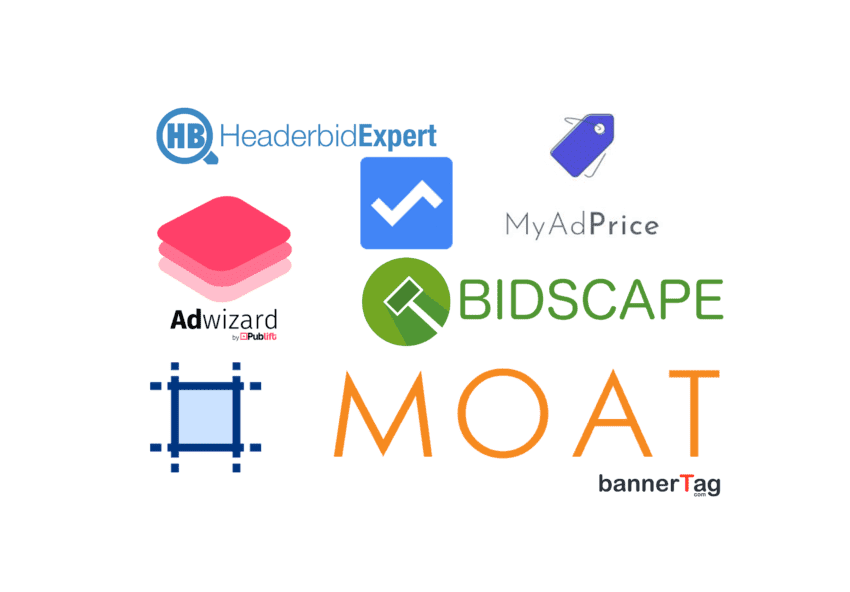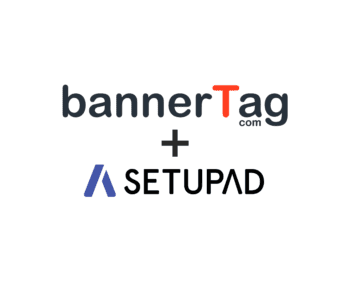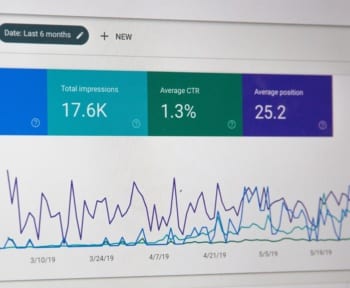Header bidding is becoming more used around the web and new tools and extensions are created to help publishers with managing their advertising setup. Even though quite many websites have enabled programmatic advertising there is still a lack of useful header bidding extensions. As more partners are added to the setup it becomes ever more important to have tools available to assist and help with the increasingly complex systems and solutions. All of the tools listed in this article are free versions and can be tried and tested by anyone.
What are we looking for in a Header Bidding Extension?
First we need to understand what we are looking for and why. Not all websites have header bidding in place, but if it has a lot of international traffic it makes sense to offer the ad inventory to as many buyers as possible. It is ofter portrayed that header bidding and programmatic advertising are complex, thus only a considerably small percentage is using it and reaping the benefits. The result of this means there are not that many useful header bidding extensions out there. If you are a publisher, you might want to understand how all of the connected partners are working on your project or on competitors websites.
A perfect scenario is when an extension would have such options:
- Latency of each partner/SSP/DSP/AdExchange.
- Asynchronous or asynchronous load of ads.
- The amount of bids.
- eCPM for each of the bids.
- Who was bidding and a winner of the impression.
- Show relevant errors and missed opportunities.
- View-ability % of the ads displayed.
- Delivered and supported ad sizes.
- Recommended ad sizes for both desktop and mobile versions of the website.
- Suggestions on how to optimize the setup and in turn earn more revenue.
In Depth Info and Tests with available Extensions
In order to have an honest opinion it is important to test all of the available tools and see how they work in different environments and websites. Let’s see what options each of the extension supports and how well they work in the real world. We also have to keep in mind that some publishers might have a more complex solution active and the tools could not pick up the necessary information. For example they might not recognise SSP’S that are connected to server side header bidding.
AppNexus Headerbid Expert
The least complex and easiest to understand is an extension created by one of the major SSP’s – AppNexus. This ad exchange is an American multinational technology company so it makes sense to check what they have created for their users. AppNexus aim for this plugin is to gain visibility into each demand partner’s load time at the impression-level to compare different wrappers, identify any bidding partners causing impression loss, and ensure maximum yield.
Extension helps with the following:
- What’s the latency from each header bidding partner?
- Do they load asynchronously or are they blocking my pages?
- Are they all loaded together in parallel?
So far it has been working great by displaying very relevant data and suggestions on what can be done to make header bidding work seamlessly. In the example below (Image 1.) we can see that New York Post uses 9 header bidding partners and Index Exchange took the longest to respond to a call.
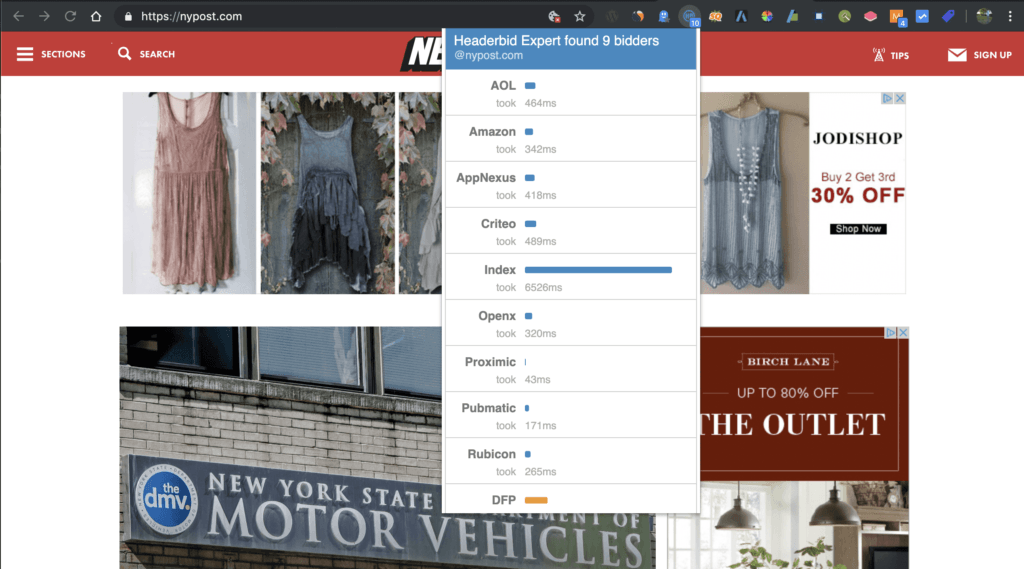

Real life example
Usually the header bidding is set up so that if a bidder takes too long to respond (usually 1000ms) then it is timed out and the bid is no longer accepted. This means that there could potentially be a problem that can be fixed. For example the server used for displaying banners is in a different country and a CDN could solve this issue. This extension is perfect if you are just checking websites and trying to understand if they have header bidding and what partners are added. Usually if you see a lot of partners (7-15) for a small website/blog it means that they might be using a proprietary solution instead of creating their own.
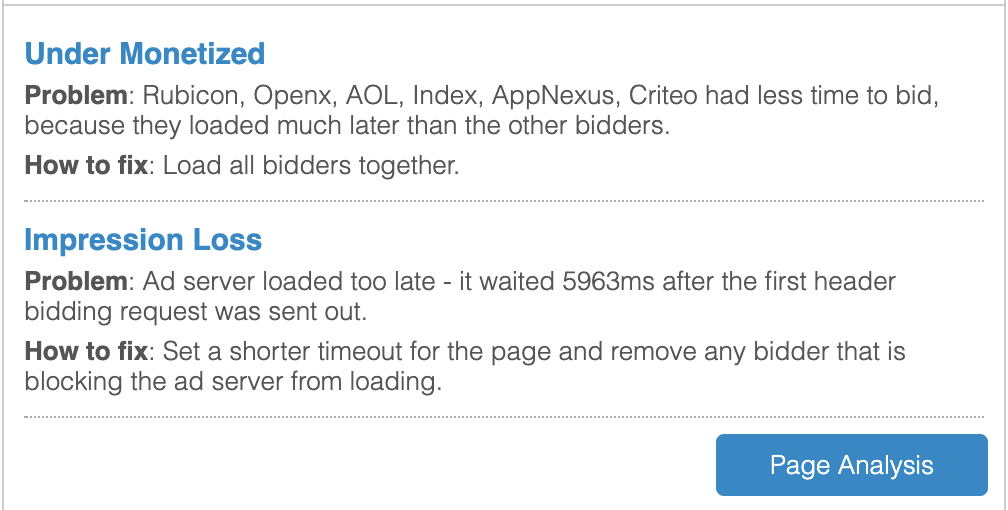

Solving a problem
When we look at the Image 1.1 (Above) it suggests that there are problems with the setup and that a potential fix could solve such issues. In this case under monetization means that many partners were not given a chance to place a bid as they loaded later. To fix this AppNexus suggests to load all bidders together. Overall this recommends that there is a problem with a server and it might be overloaded.
The second suggestion really is not that good nor useful. The real problem in such impression loss could be connected to the load time of the website. If the ad banners are loaded synchronously it could cause for the ad server to take too long to respond because of the page speed. Asynchronous banners would most likely fix this issue as they are loaded only after the page is fully functional.
Overall, the suggestions are somewhat useful but not conclusive. We have also noticed that the AppNexus Headerbid extension does not show all bidders. This could be because it is not updated too often and the new adapters (partners) are not recognised.
Available for download: Headerbid Expert, Offered by: prebid.org
Bidscape.it Header Bidding Ad Inspector
Bidscape tool analyses header bidding requests and helps publishers (website/blog) owners with setup and the aim is to show how much revenue their browsing is worth. Bidscape.it is a proprietary programmatic product where a publisher can add multiple SSP’s (partners) for a fixed monthly price. This means they should have an insight information on what website owners are looking for in such a plugin.
The tool will show up in the right top corner when it detects that ads are delivered on the page. The goal of this extension is to automate and optimize header bidding for publishers in order to save time and maximize revenue.
Extension helps with the following:
- Detailed targeting parameters.
- Displays bids from amazon and prebid auctions, including:
- Winners,
- Rendered ads,
- Viewability percentages.
- Supports refreshing ads and infinite scroll.
- A regular user can use this extension to see how much advertising revenue they are generating for each page that is visited while browsing the web. This is reported in eCPM (Revenue per 1000 impressions). – The statistics are only estimate.
How it works in real life?
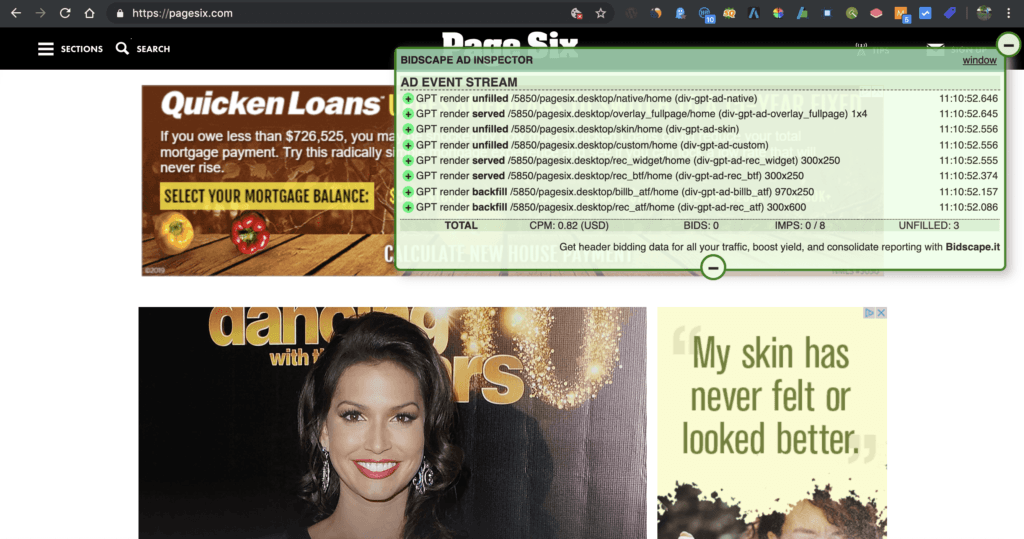

The Bidscape.it extension looks rather complex with a lot of detailed data that can be used to understand the setup of really any website out there. If we have a closer look at the image above (Image 2.) we can see that pagesix.com has native, overlay and normal banners on the page so this is a perfect example. By clicking on each it will highlight the banner and show even more detailed analysis of each of the advertisements.
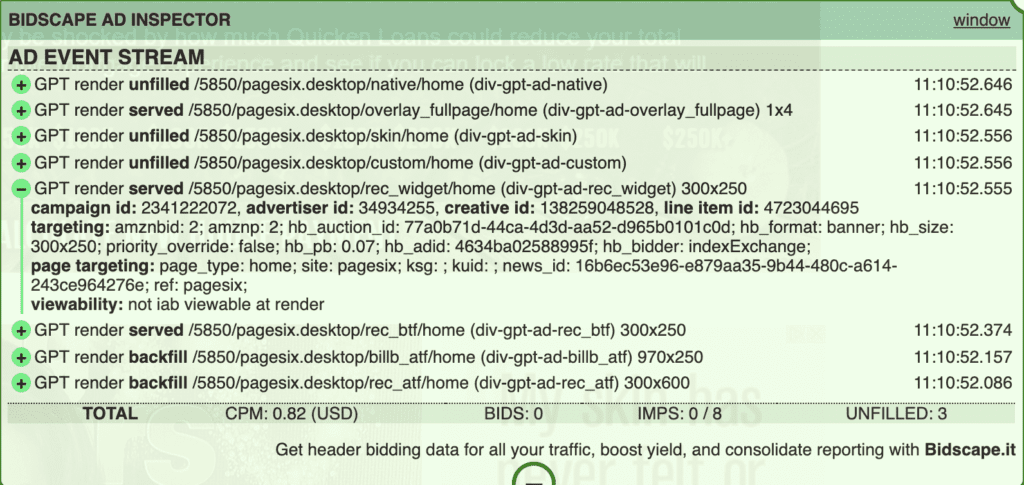

In the example above (Image 2.1.) we have extended the data about 300×250 ad banner. Here we can see that the winner of the auction was amazon with 0.07 eCPM, apparently higher than IndexExchange (does not say what the bid was). Everything else here does not seem that useful for an average internet user, but for a website owner this can be quite useful to check if the targeting is correct.
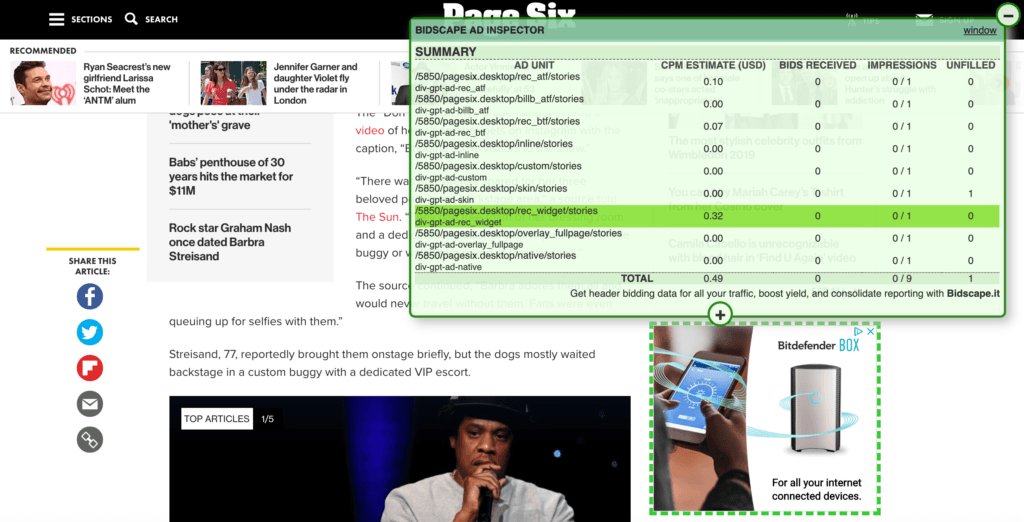

Looking into the overall eCPM’s (Image 2.3) for each of the banners we can see that it is very strange. None of positions show that there were any bids received, impressions were not received or filled. Not very useful and really there is no value in such insufficient information.
Is it good?
Overall this extension is only useful for very specific data (not that relevant) and can be used to check what solutions each website/blog is using for example native, video or banner ads. If we look at what the plugin promises it is far off from its main goals. It could be that it is just outdated and not kept up to date therefore not displaying the information it should. It seems like this plugin was developed to just advertise their own product instead of it being much useful in real life.
Available for download: Bidscape.it Header Bidding Ad Inspector, Offered by: mars.
Adwizard
Adwizard chrome extension was created by Publift – a proprietary header bidding solution. Similar to Bidscape, this tool seems to be created to advertise their own products. The main goal of this extension is to allow publishers to view data on AdExchange and Prebid Ads. Clicking on the ad unit icon next to the left of the ad unit name will scroll the web page to the corresponding unit and place a border around it, so it can be easily identified. Adwizard provides publishers with the ability to see the information for each Prebid auction that occurs on your page in real-time.
Extension should help with the following:
- Size mapping.
- Targeting.
- Prebid auction details.
- Provides publishers with hard-to-reach data, previously only found through the developer console.
- Helpful insights on header bidding network partners such as Rubicon, Pubmatic, Appnexus, Index Exchange and others.
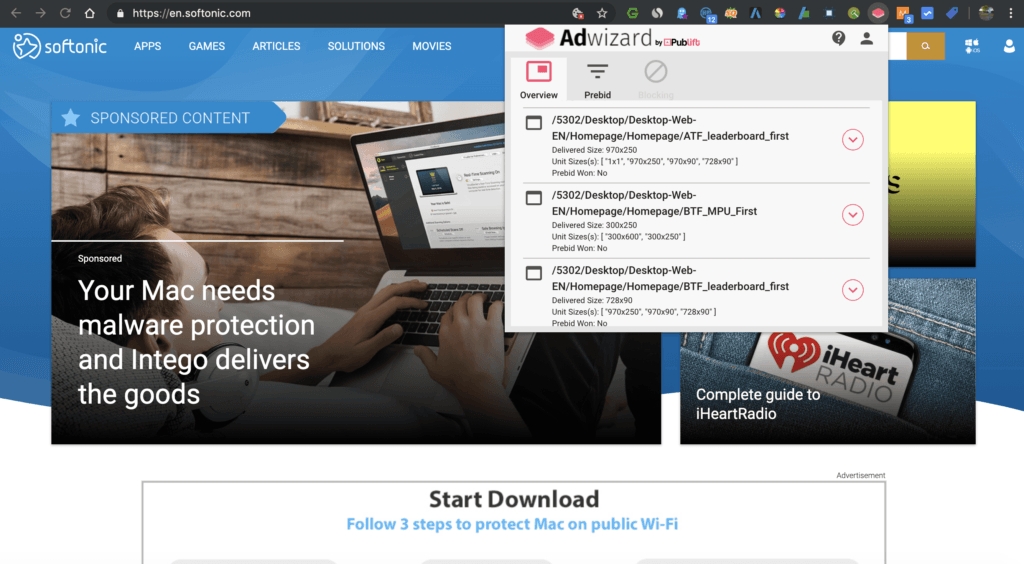

Real life example
The tool is easy to understand and use. (Image 3.) For this test we will be using softonic.com website as an example. We can see that they are using at least 12 header bidding partners (that is what AppNexus extension is displaying).
Here we see that there are plenty of sizes in rotation for each of the positions. This is a popular technique if you are using header bidding, adding as many sizes as possible to a single banner will return better results. The best paid size at that moment will win the auction, even though it might be smaller and less popular there could be an advertiser out there who has paid good money for it. We can see that for the ATF_leaderboard_first 970×250 was displayed and there were 3 sizes in the rotation – 728×90, 970×250, 970×90. 1×1 is just an impression pixel so do not count that.
Adwizard clearly finds all of the positions on the website including the ad unit names very precisely. This can be useful to check if the banners are placed in the right positions and can really be used by anyone.

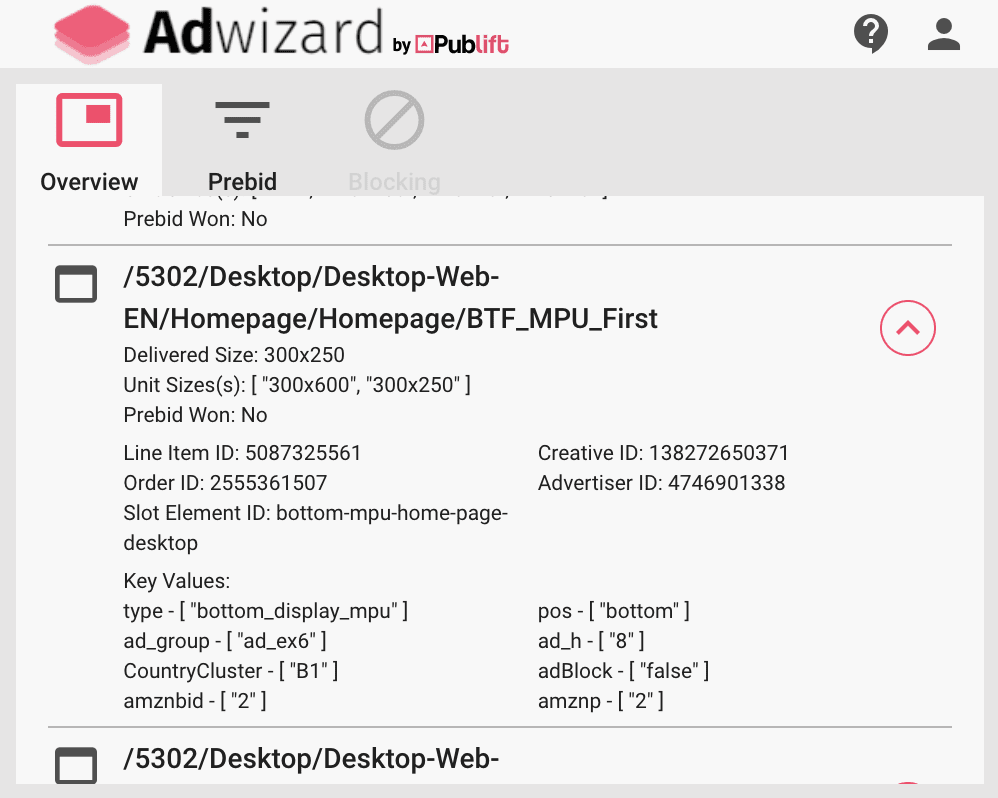
Image 3.1. Adwizard Chrome Extension Example 2 
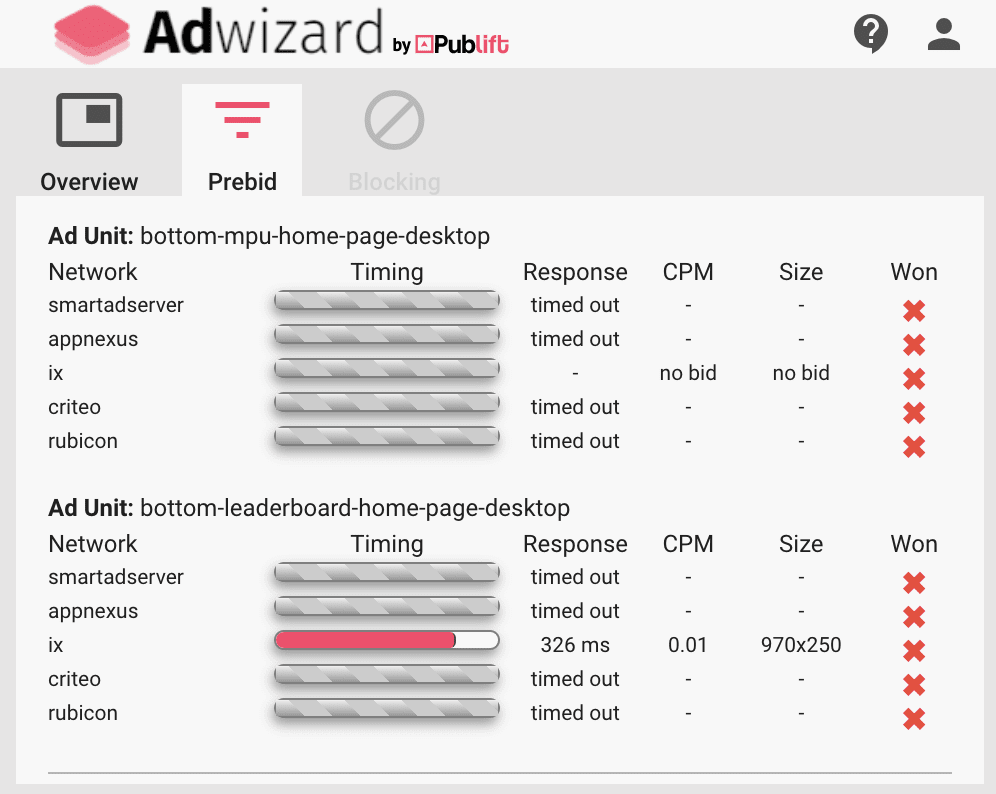
Image 3.2. Adwizard Chrome Extension Example 3
Lets dig deeper
In the Image 3.1. we can see that when expanding the data we have even more information about a specific placement. We see that 300×250 was delivered, which line item it was a part of, order ID, creative ID, advertiser ID (great for blocking and finding specific ads) and key values. It is clear and easy to understand, nothing useless so far.
If we look at Image 3.2. there is an option to look at the Prebid information and see who (partner/SSP/DSP/Ad Exchanges) was competing in the auction. Here we see that most of the bids timed out for 300×600 position, but for leaderboard Index Exchange has won the auction. So if there were no winners, how did the ad still appear? It could be that google has won it, or possibly a passback was displayed. It also greatly depends on the location of the user and how much the visitor is worth to the advertiser. If the user is in high demand, then there will most probably be more bids therefore generating more revenue for the website.
Overall it is a great plugin and there is medium depth information that can be understood and used by anyone. Check out your competitors and see what they use, what sizes they have added and what partners are used.
Available for download: Adwizard, Offered by: publift.com
MyAdPrice
MyAdPrice allows you to track how much money advertisers bid to show you ads as you surf the Web. This chrome extension utilizes hooks in the Prebid.js library along with other methods to track activity. The extension can observe the actual bid amounts that ad exchanges send and which bid wins and so on. MyAdPrice has been developed by researchers at Duke University and is available to download for free. It has good rating and almost 400 downloads, so it is expected to be quite good. MyAdPrice is a new open source project and the code can be accessed here.
Extension should help with the following:
- Tell you how much advertisers are willing to pay to show you their ads.
- It uses JavaScript to keep track of ad slots on websites a user visits. It tells the sizes of the ad slots, the bids that different advertisers made to show their ads, which bid won, and how much revenue the website generated off of a visit.
- Find out what ad revenue websites make from your visits. Compare it to other users.
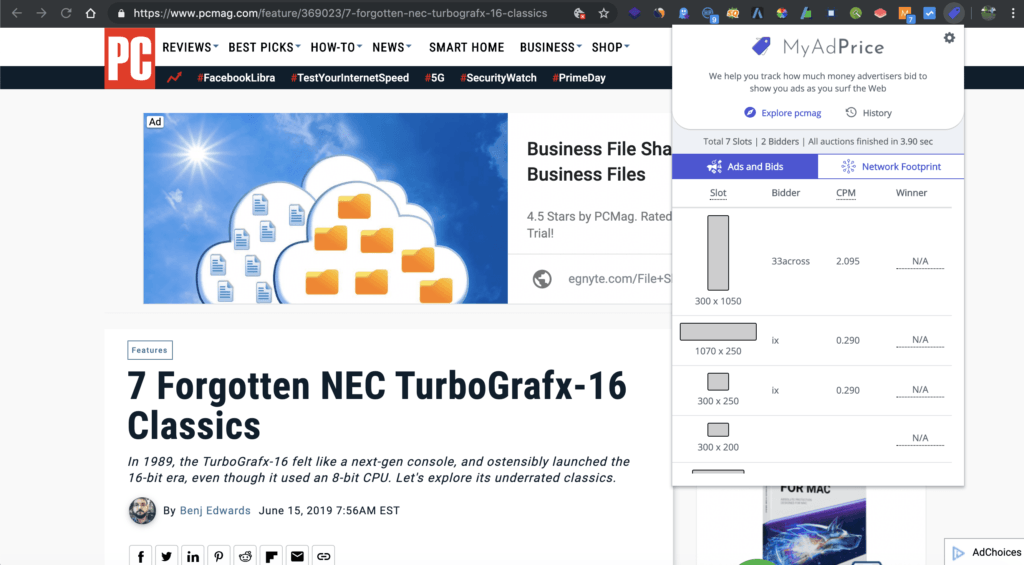

Real life example
In this test we are going to use two websites. PCMag and New York Post. In the Image 4. we can clearly see what ad banners were displayed, who was the bidder and for what CPM the impression was bought. Simple, easy to understand and precise. We can also see that the auctions finished in 3.9 sec, which is quite long considering that usually the timeout is set to max 1 sec. Here we could use some of AppNexus recommendations and see what it suggests can be changed to increase this speed.
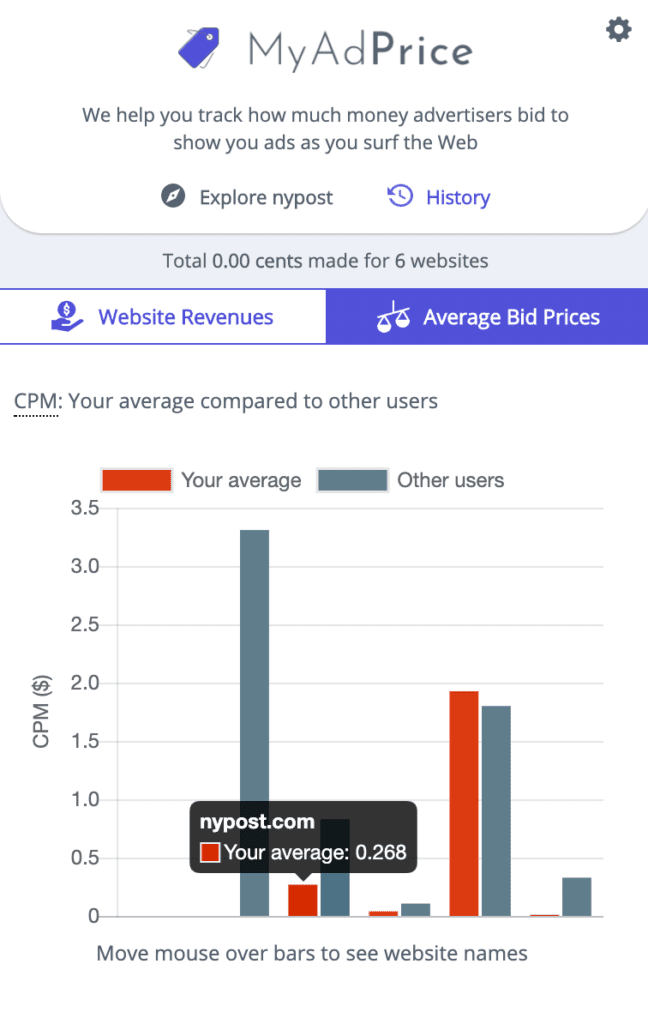

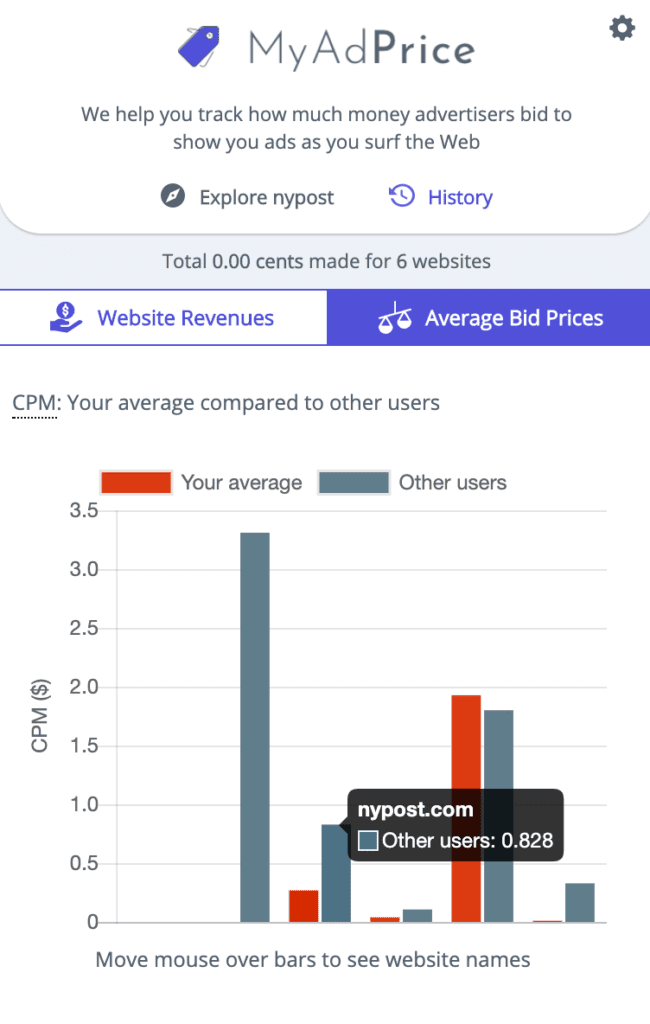

In the Image 4.1. and Image 4.2. we have used New York Post as a test subject for seeing the average eCPM and how much we are worth in comparison to the average user. Here in this example we can see that our worth is 0.268 eCPM and the average for other users is 0.828. That is about 3x more, which is fine as it really depends on the location and interested advertisers at that moment.
Is it good?
Overall it is a great extension, it did not display all of the header bidding partners but it has a lot of other useful data. In combination with AppNexus Headerbid Expert it works great. How precise is the data? It mostly is average and will only give you ideas for changes, which is good enough. It is great that it is open source and anyone can really suggest changes or even do them themselves.
Available for download: MyAdPrice, Offered by: myadprice.com
Other Useful Ad Chrome Extensions
As it was mentioned before, there are not a lot of Header Bidding extensions out there – either they are used privately for company purposes or for self promotion (Except for MyAdPrice).
So we have checked out a few other tools that we are using ourselves and can be useful for anyone interested in how ads work, what are the sizes and how it is set up. We are sure that there will be plenty more new tools in the near future as there will be more demand and interest.
Moat Extension
This tool tracks what ads are running on the internet. The main features are to discover the ad servers, networks, DSPs, SSP’s, exchanges, and measurement platforms involved in each ad impression. Moat is a cross-platform analytics company that lets brands and publishers to run on trillions of ad impressions and content views to measure and drive attention. In this case we are using their free of use chrome extension specifically designed for ads.
The interface is very clear and the information is interesting for anyone who is curious in how each website has set up their advertising server. It is not 100% clear how precise Moat is, but based on our tests in most cases it displays very relevant data. The ad specific tag tree displays a quick analysis of the ad tech vendors involved in delivering each ad impression. This is very useful for those who want to check how their own ads work. So it is easy to analyse if the ad setup is working properly. Seeing how the tree works can really help.
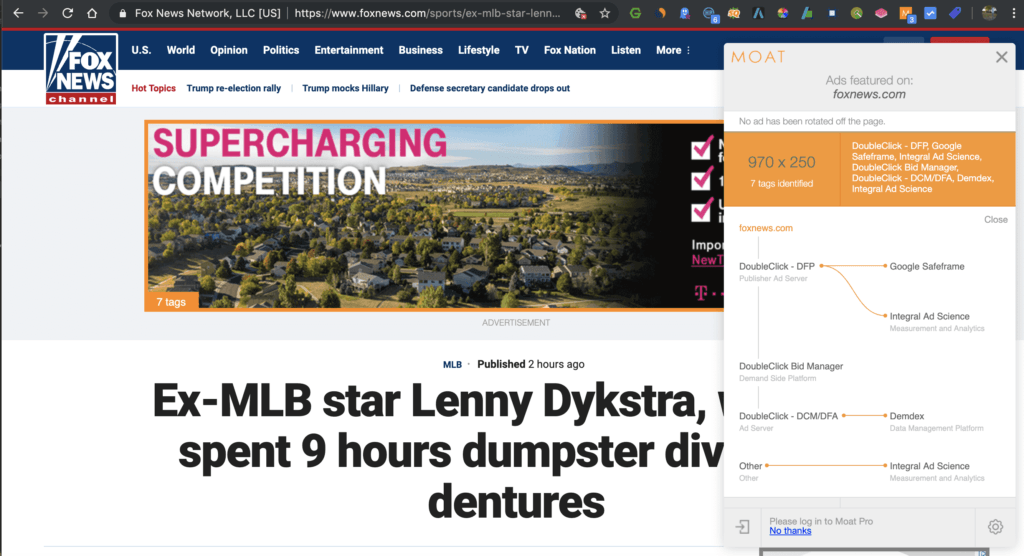

In Image 5. above we have used Fox News as an example to test this tool. We can see that the website is using DoubleClick – DFP (Google AdManager) in a combination with Integral Ad Science (IAS). This combination is quite popular where the setup ad server includes IAS. Therefore analysing web traffic that helps to remove suspicious activity and users. The tool is very basic, but gives a great overview of advertising methods used by each website.
Available for download: Moat Extension, Offered by: moat.com
Google Publisher Toolbar
This is for those who use Google ads as part (or only) of their advertising setup. This tool displays analytics about AdSense, Ad Exchange, and DoubleClick for Publishers ads and accounts. In addition it helps with blocking unsuitable ads on a site. The Google Publisher Toolbar adds an overlay to each of your Google ads. Providing some basic information about the ad, including its size, display URL and the advertiser name.
Extension should help with the following:
- Summary reporting on the ad unit including performance metrics, such as clicks, RPM and estimated revenue.
- A link to the ad’s landing page, allowing for safe clicks.
- The display URL.
- The buyer name.
- The top five channels or top five sites in descending order of revenue. For today, yesterday, 7 days, this month and last month.
- An estimated account earnings summary for today, yesterday, this month or last month.
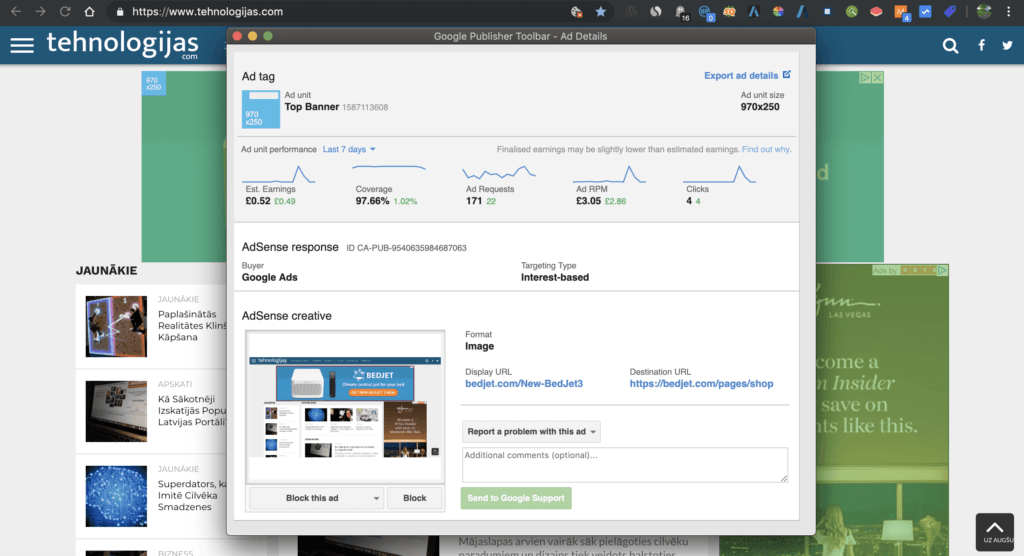

For this test (Image 6.) we can see that the tool really shows a lot of relevant data and is extremely easy to use. Try it on your own website, log into your account and see for yourself. The best part is that the plugin is always available at the top right corner when you browse the internet. Therefore you can always just quickly check revenue for today/yesterday/month/last month. We greatly recommend this tool.
Available for download: Google Publisher Toolbar, Offered by: Google
Page Ruler
Petar Ivanov has created this tool to help hundreds of thousands of users who have already dowloaded it. This chrome extension lets you draw out a ruler to any page and displays the width, height and position of it. This helps with measuring exactly how big the ads are on each website precisely.
Extension should help with the following:
- Draw a ruler to any page and view the width, height and top, bottom, left and right position.
- Manually update the size and position of the ruler from the toolbar to make precision changes.
- Drag the edges of the ruler to resize it.
- Show guides extending from the ruler edges.
- Use the arrow keys to move and resize the ruler.
- Navigate through parents, children and sibling elements of any measured element.
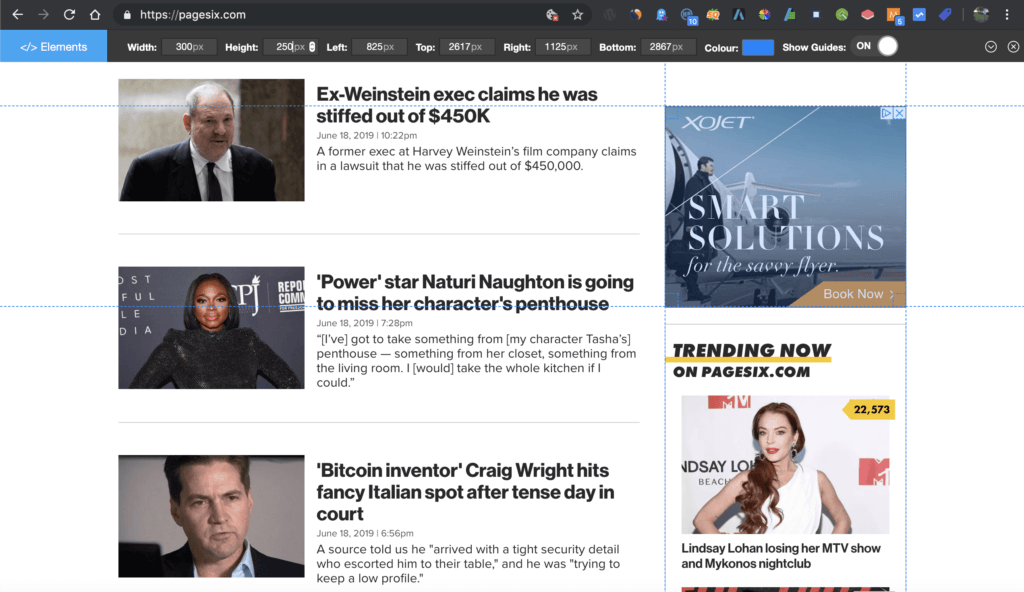

If you have a competitor you can check out what ad sizes they are using and use the same on yours. In the example (Image 7.) we can see that on the side column the banner size is 300×250 (we suggest to use 300×600 instead).
It is a simple and useful tool that will always come in handy. Whether it is for measuring advertisement banners or just elements on the page.
Available for download: Page Ruler, Offered by: Petar Ivanov
Conclusion
Out of all of these tools the favourites are AppNexus Headerbid expert, Google Publisher toolbar and AdWizard. With these 3 extensions you really have almost all necessary info to make smart decisions and just explore.
We suggest you try these for yourself and find the best combo that will help you grow your website revenues in a smart and precise manner.


